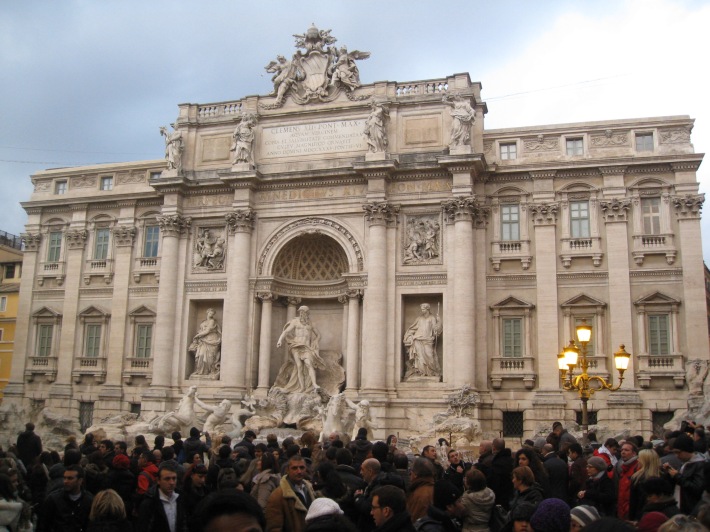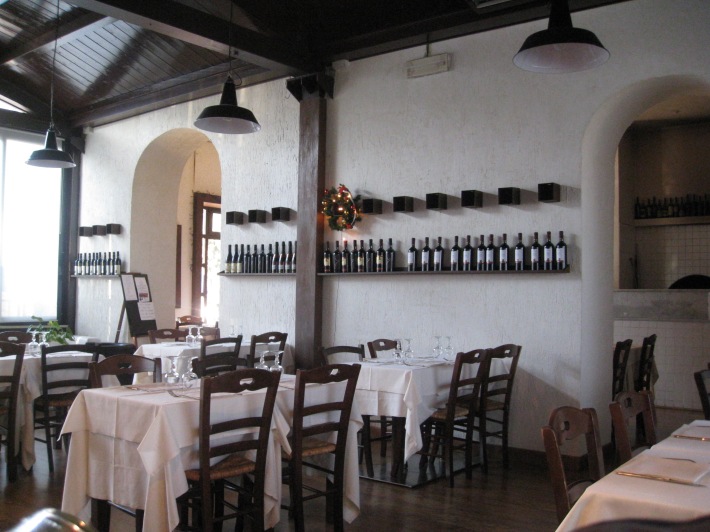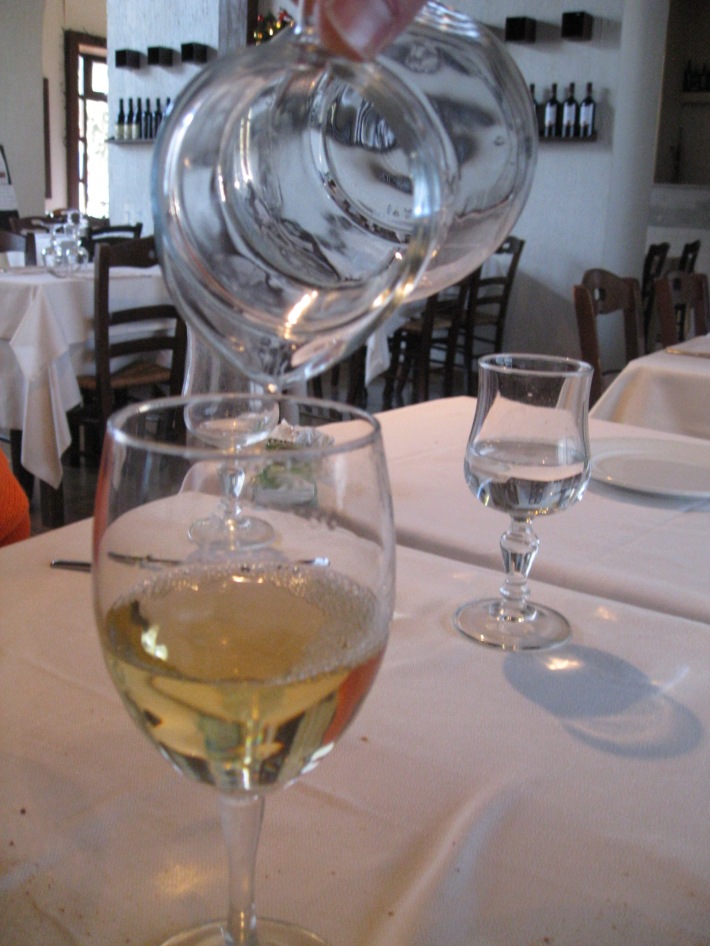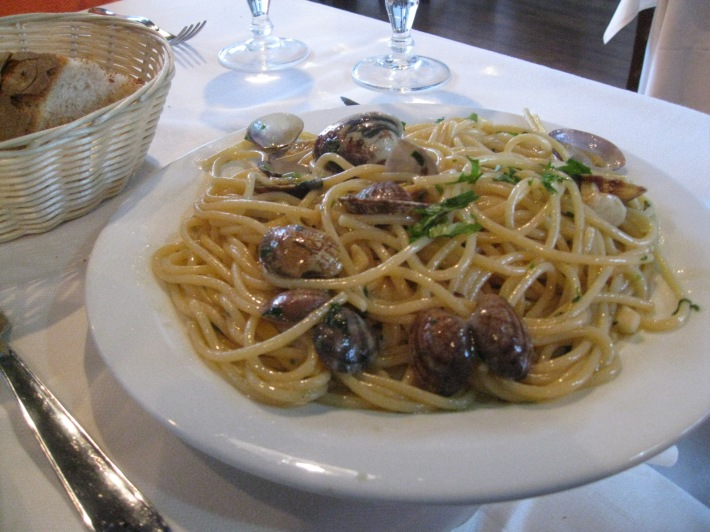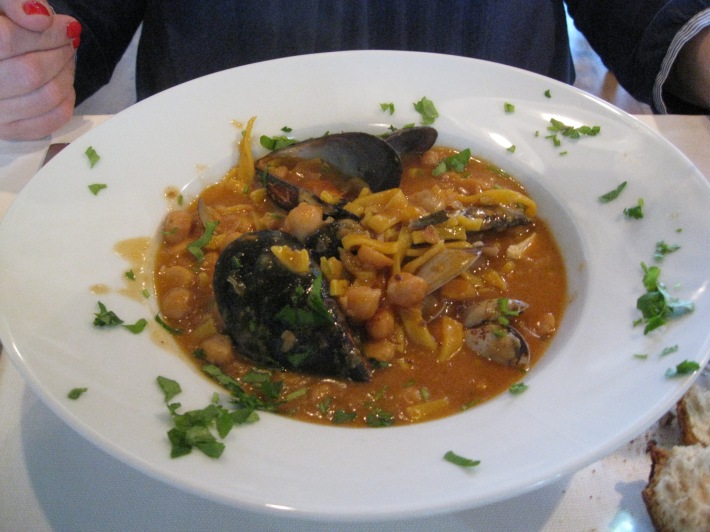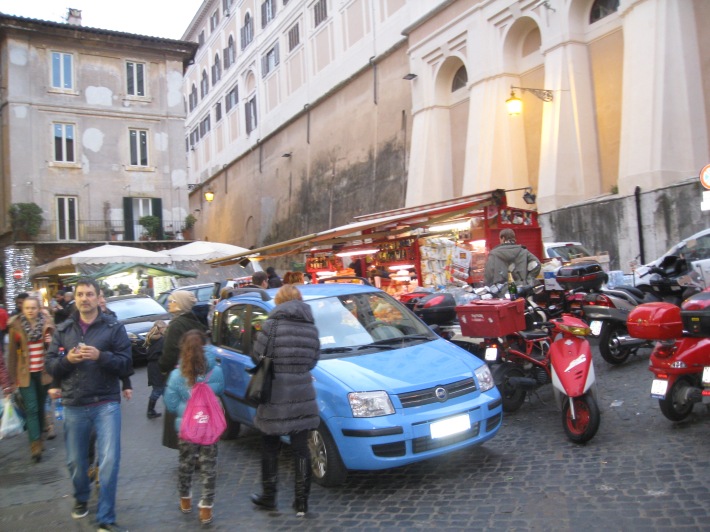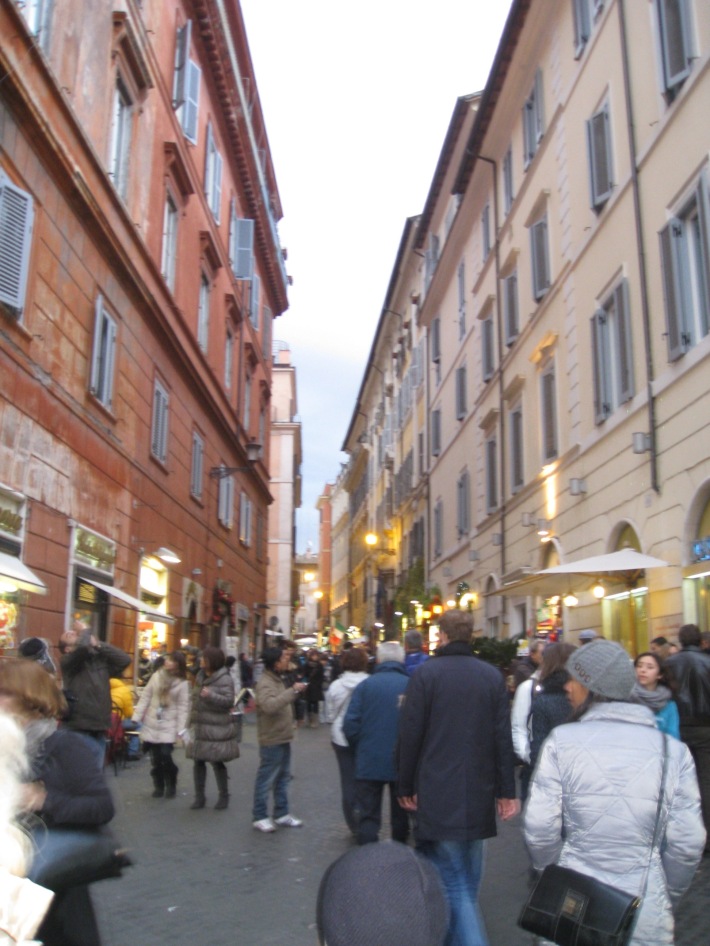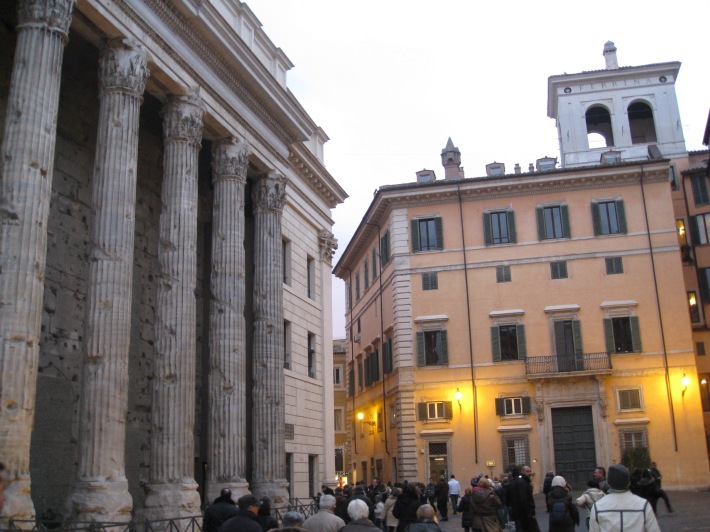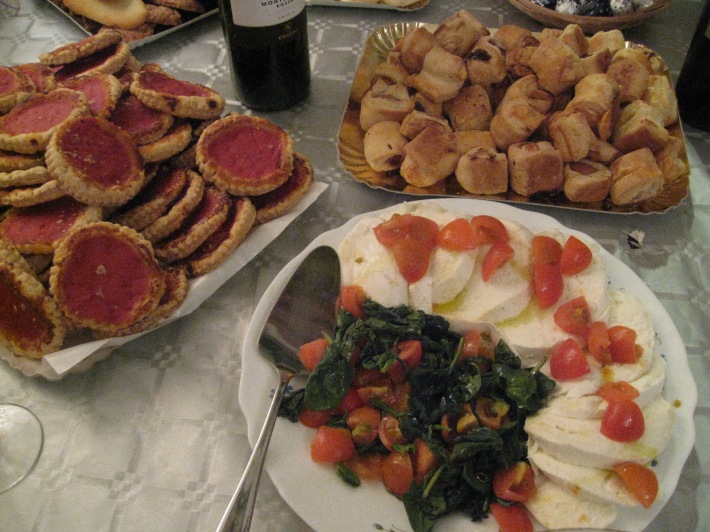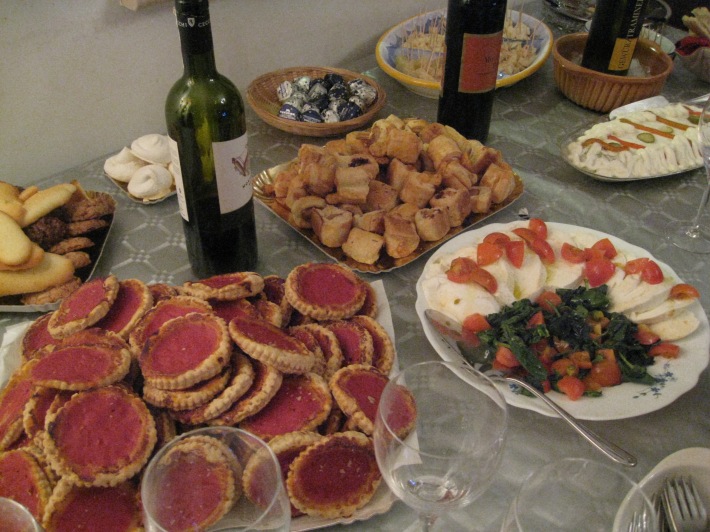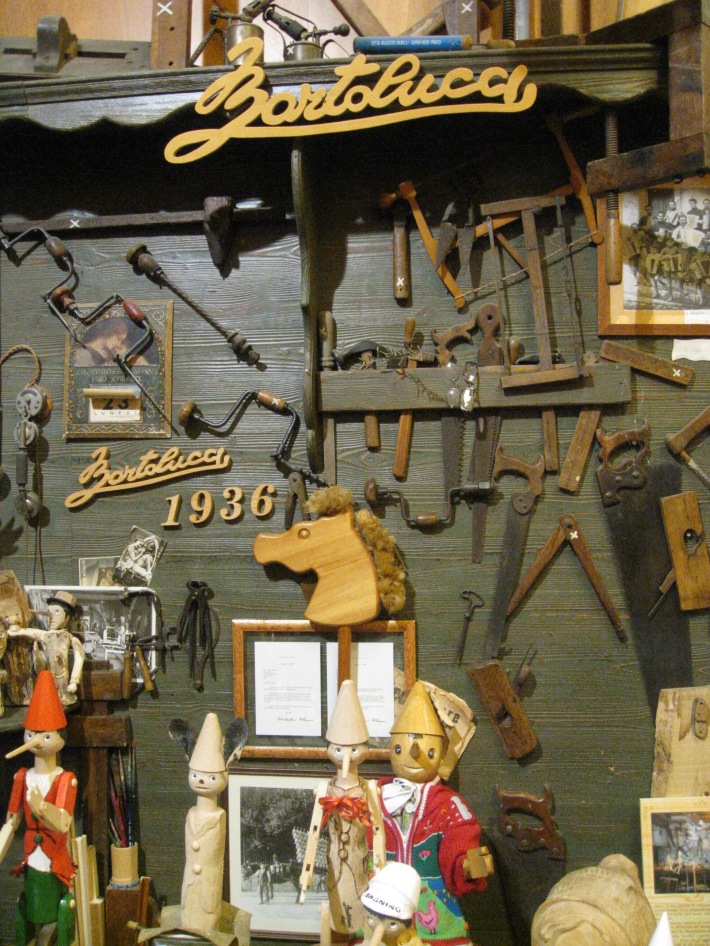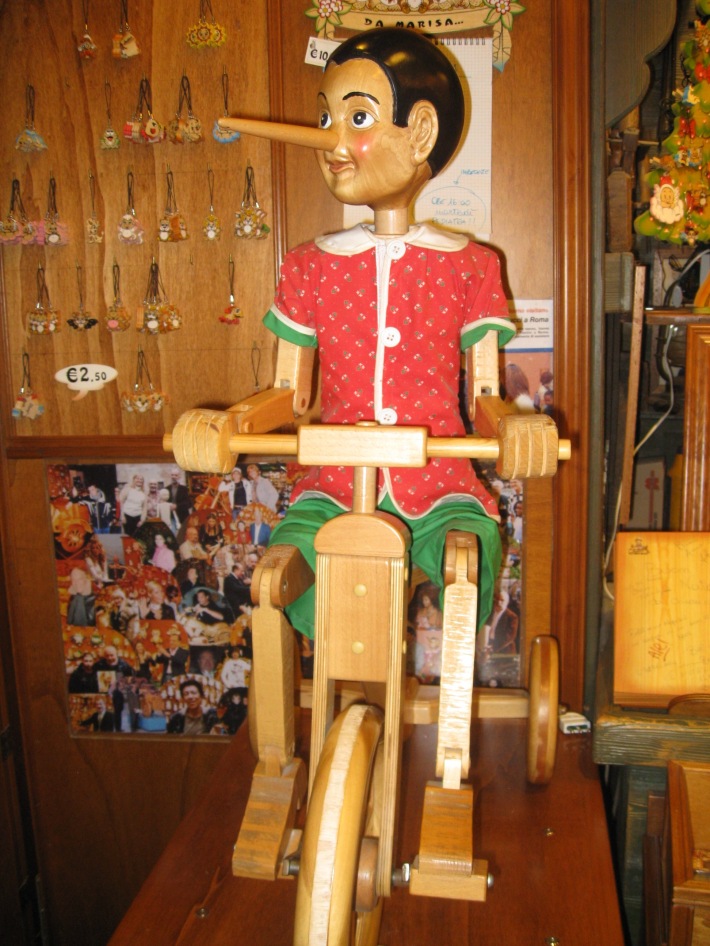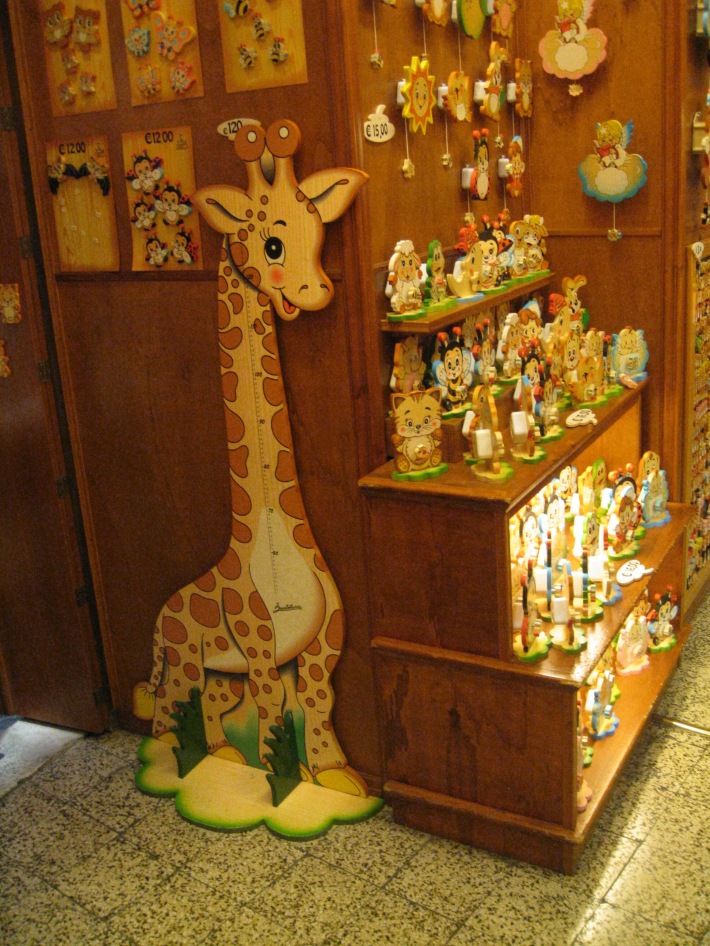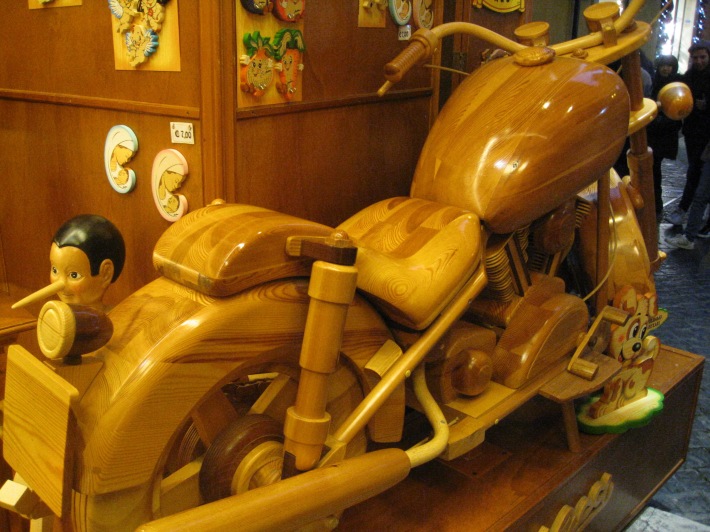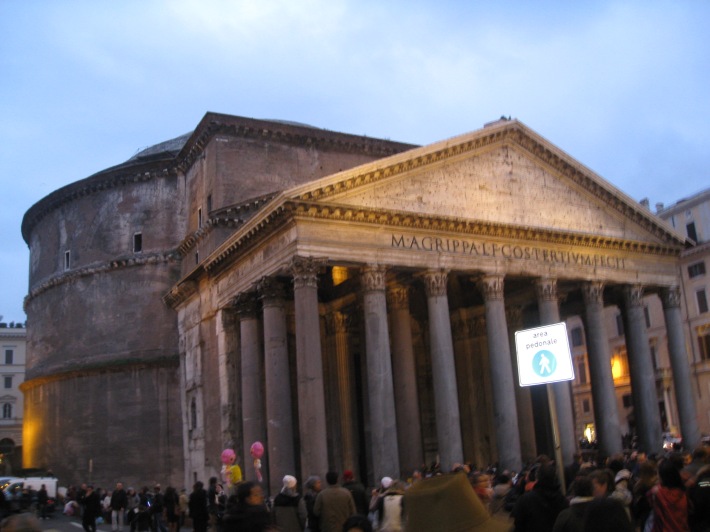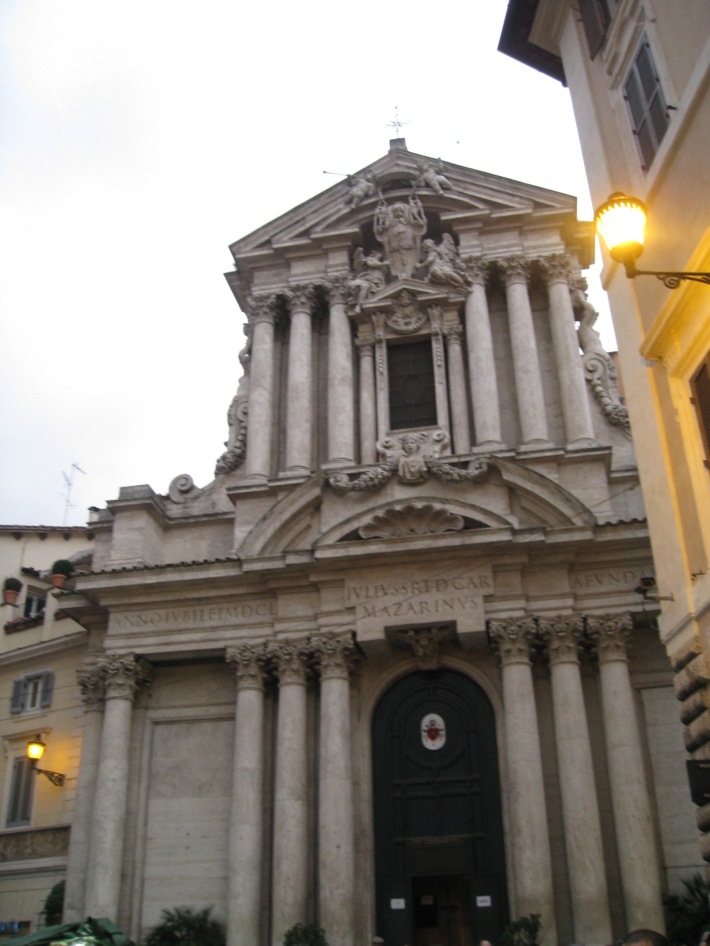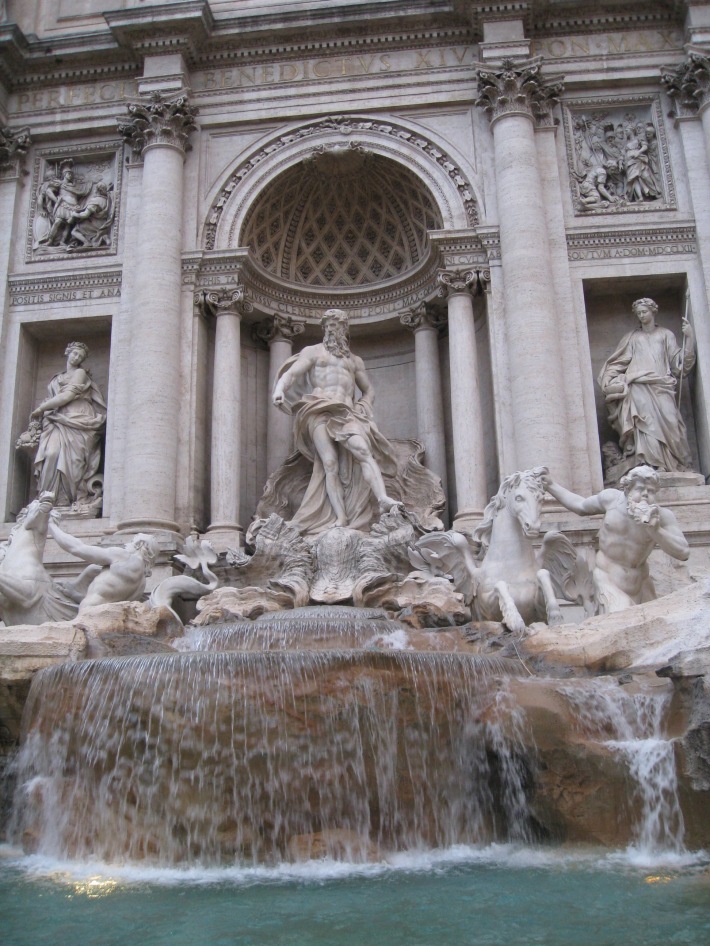This year, we had the good fortune of spending New Year in Roma with my sister-in-law’s family.
New Year’s eve was filled with busy preparations: shopping, beautifying, etc. So, we began the afternoon by popping into a trattoria around the corner from my sister-in-law’s place for some hearty fortifications.
Wine at lunch. Not only civilized, but essential in preparing yourself for the evening’s festivities.
I have never encountered a dish of spaghetti alle vongole (spaghetti with clams) that I could pass up and this day was no different.
Both G and my sister-in-law ordered this beautiful plate of pasta with chickpeas and shellfish.
Once properly fed, we braved the busy streets of Roma to make preparations for the rest of the evening.
Roma, being both beautiful and the seat of western civilization, is very popular with tourists, especially around any given holiday. So, the streets were quite crowded everywhere we went.
The building on the left is a wonderful example of Roma’s appeal. It is a bank building (new, and presumably “beautiful”) attached to some ruins (very old and historic). This type of juxtaposition is everywhere in Roma.
But the beauty of Roma is not only found in her streets among the ruins and art, but in the homes and hearts of her people.
These are just a few of the goodies my sister-in-law prepared for the festivities. I love the abundance of the table. I like to think it symbolically sets the tone for the new year ahead. And speaking of symbolism, the caprese salad above boasts the colors of the Italian flag.
Everything about the evening was wonderful: the food, company, setting, and warm feeling you get from being with family. No doubt, this was all due to my sister-in-law’s tireless efforts at setting the stage for a memorable evening.
New Year’s day we joined the throng of tourists to do a little sightseeing around town. First stop, the world-renowned Bartolucci.
The Bartolucci family excels at woodworking and their company has been awarded the Qualification of Artistic Craftsmanship, in addition to many industry awards.
The company primarily makes toys with a heavy emphasis on Pinocchio. (Pinocchio is Tuscan, remember?) But they also make many accessories for children’s rooms like clocks, lamps, picture frames, etc.
Bartolucci also takes special commission jobs.
The store was so packed with people buying everything in sight! I was so happy to see that people still value fine craftsmanship and are willing to pay for it.
Next stop: the Pantheon. The Pantheon began its life as a pagan temple somewhere between 27 and 25 B.C. and was the first religious building open to the public. Later, the structure was given over to Christianity. FYI: My nephew was christened in the Pantheon.
The building sits on the site where legend tells us Romulus, founder of Roma, died and was carried off by an eagle to join the gods.
The Pantheon’s structure is a masterpiece of engineering and architecture. In fact, its domed roof – a real breakthrough – made possible every skyscraper in existence today.
From there, we made our way over to la Piazza di Trevi and the Church of St. Ignatius (above) and la Fontana di Trevi, or Trevi Fountain (below).
La Fontana di Trevi is the largest Baroque fountain in Italy (the photo at the top of this post gives you a better sense of the size) and quite possibly the world. The fountain is situated at the end of the Aqua Virgo (Virgin), an aqueduct constructed in 19 B.C.
In this photo you see Ocean in the center atop his triumphal chariot. To his right stands Abundance and to his left is Health. The chariot is led by two horses each with a Triton for a rider. One horse is calm, the other restless. The horses represent the nature of the sea itself. Naturally, there is a lot more symbolism to be found in this image and the entire fountain, but I’ll hopefully save that for when you visit.
Legend has it if you turn your back to the fountain and toss a coin over your shoulder into the fountain’s waters you will return to Roma.
Those of you who know me know I’m not given to superstition. However, every time I’ve visited Roma I’ve made it a point to toss a coin in the fountain and to date, I’ve had the good fortune of visiting Roma five times! Coincidence? Maybe. But why take a chance?
Once again, I owe a debt of gratitude to my sister-in-law’s seemingly endless capacity for generosity. To say la Fontana di Trevi was a madhouse on New Year is an understatement. Getting to la Piazza was difficult enough, but the Fountain…well that seemed impossible as there were people – at least 40 deep – all the way around it.
My sister-in-law, knowing it was important to me to toss a coin in the Fountain, patiently helped us make our way (elbow our way?) through the groups of people until I was at the water’s edge. I turned around, closed my eyes (my idea, but not part of the legend), and tossed my fateful coin.
Thank you V. I know it was a production getting us there so that I could indulge a superstition and I greatly appreciate all your efforts that day.
Here’s wishing you all un buon anno!
Arrivederci!
